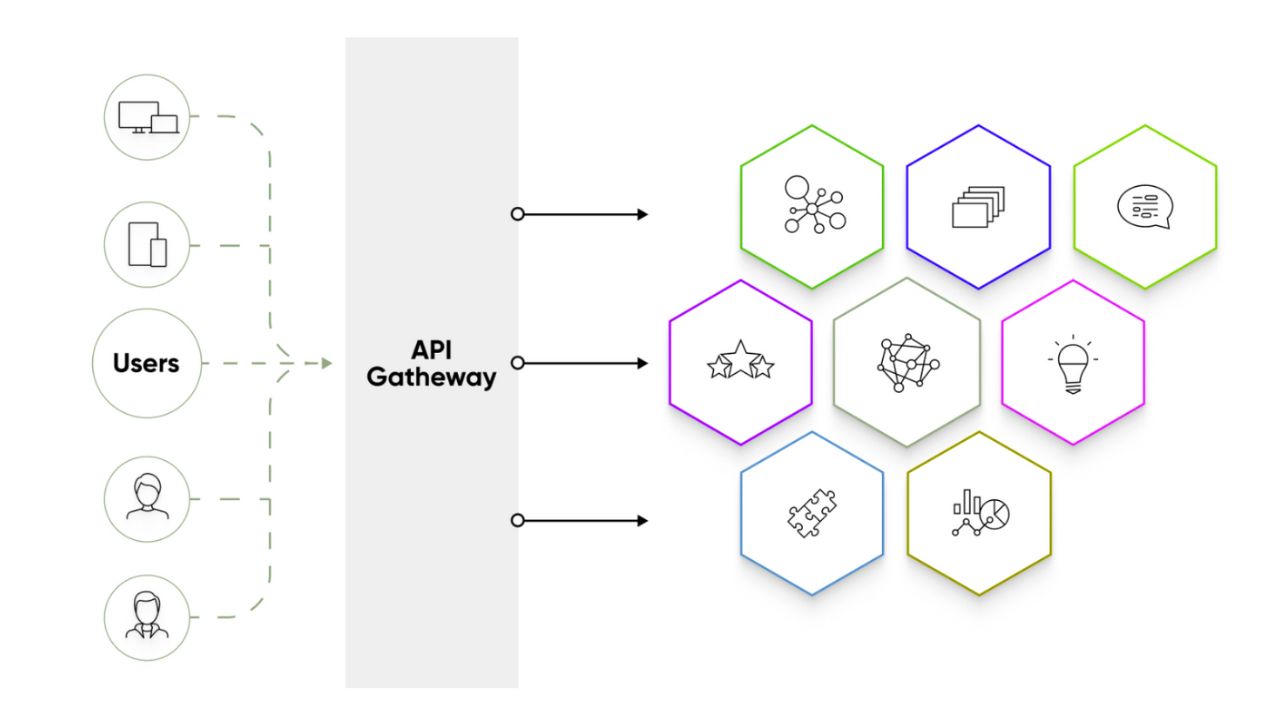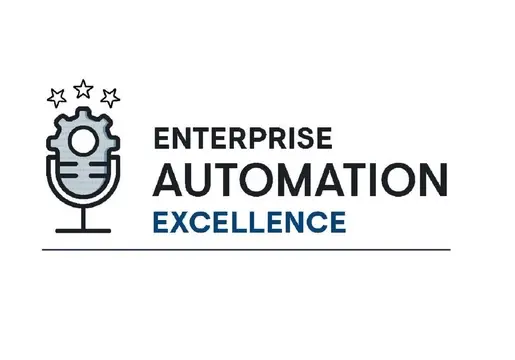In the fast-paced world of technology, innovation is the key to staying ahead of the curve. Composable architecture has emerged as a groundbreaking development concept, revolutionising the way organizations approach their IT infrastructure and build applications.
But what exactly is composable architecture? In this comprehensive article, we’ll delve deep into the meaning of composable architecture, exploring its components, benefits and challenges in the enterprise.

What is composable architecture? Definition
Composable architecture is a way of designing applications that allows developers to create reusable components to build applications more quickly and easily. It’s based on the idea of breaking down an application into small, independent modules that can be combined in different ways to create different features connected via APIs.
Composable architecture vs microservices
Composable architecture is often associated with the microservices architecture pattern, but it is not the same thing. Microservices are a way of organising an application into a collection of independent services that communicate with each other through APIs, while composable architecture is a design pattern that allows developers to create reusable components that can be combined to build applications more quickly and easily.
Imagine you are building an e-commerce application, for example. A composable architecture would allow you to create reusable components for different parts of the application, such as a product catalogue component, a shopping cart component, and a checkout component. You could then combine these components to create different versions of the application, such as a website, a mobile app, and a voice-activated app.
With a microservices architecture, however, you would instead divide the application into a collection of independent services such as a product catalogue service, a shopping cart service, and a checkout service. Each service would be responsible for a specific task, and they would communicate with each other through APIs.
The best approach for you will depend on your specific needs and requirements. If you need to build an agile, scalable, and reliable application, then composable architecture is a good option. If you’re building more than one application, then microservices may be your best bet.
Components of composable architecture

The components of composable architecture can vary depending on the specific implementation, but they typically include:
- Microservices. Microservices are small, independent services that communicate with each other through APIs. They are the basic building blocks of composable architecture.
- APIs. Application Programming Interfaces (APIs) are sets of protocols, routines, and tools for building software applications. They provide a way for different software components to interact with each other, allowing them to exchange data and functionality.
- Events. Events are signals that are emitted by components to notify other components of changes in state. They are used to coordinate the behaviour of components in a composable architecture.
- Containers. Containers are isolated environments that allow components to run independently of each other. They are often used to deploy and manage microservices.
- Orchestration platform. An orchestration platform is a software system that automates the deployment, scaling, and management of microservices.
In addition to these core components, composable architecture may also include other components such as:
- Configuration management. Configuration management tools are used to manage the configuration of components and services.
- Service discovery. Service discovery tools allow components to find and connect to each other.
- Monitoring and logging. Monitoring and logging tools are used to monitor the performance and health of components and services.
Examples of composable architecture
Composable architecture requires careful planning and design to be implemented effectively. Here is an example of how the components of composable architecture might be used to build a simple e-commerce application:
- The application could be composed of a number of microservices, such as a product catalogue microservice, a shopping cart microservice, and a checkout microservice.
- Each microservice would be responsible for a specific task, such as managing the product catalogue, tracking items in the shopping cart, or processing payments.
- The microservices would communicate with each other through APIs. For example, the checkout microservice would need to call the product catalogue microservice to retrieve product information and the shopping cart microservice to retrieve the items in the user's cart.
- The microservices would be deployed to containers and managed by an orchestration platform.
- The application could be customized by adding new microservices or reconfiguring the existing microservices. For example, the business could add a new microservice to allow users to create wishlists, or they could reconfigure the checkout microservice to support a new payment method
Benefits of Composable Architecture
Composable architecture comes with a number of benefits for your business. These include:
- Increased agility. Composable architectures make it easier to develop and deploy new features quickly. This is because developers can simply reuse existing components or create new components that can be easily integrated with the existing system.
- Increased scalability. Composable architectures are also more scalable than traditional monolithic architectures. This is because the components can be scaled independently of each other.
- Improved reliability. Composable architectures are also more reliable than traditional monolithic architectures. This is because the components are isolated from each other, so a failure in one component will not affect the other components.
- Reduced costs. Composable architectures can help to reduce costs by allowing businesses to reuse existing components and avoid vendor lock-in.
- Improved innovation. Composable architectures make it easier for businesses to experiment with new technologies and to develop new products and services.
In addition to these general benefits, composable architecture can also offer specific benefits for different types of applications. For example, composable architecture can be used to build more agile and scalable e-commerce applications, to build more reliable and secure financial applications, and to build more innovative and user-friendly mobile applications.
Use cases for composable crchitecture
Composable architecture is gaining traction across various industries and for a wide range of use cases. Here are some specific examples of how businesses have benefited from using composable architecture:
Netflix uses a composable architecture to power its streaming service. This architecture allows Netflix to quickly add new features and to scale its service to meet the needs of its growing user base.
Amazon uses a composable architecture to power its e-commerce platform. This architecture allows Amazon to rapidly add new products and services, and to scale its platform to meet the demands of its global customer base.
Spotify uses a composable architecture to power its music streaming service. This architecture allows Spotify to quickly add new features and to personalize the user experience for each individual user.
Challenges and considerations
Composable architecture is a powerful approach to software development that can help businesses build more agile, scalable, and reliable applications. But it's not a silver bullet.
Implementing composable architectures can be complex to design and implement. It requires careful planning and coordination to ensure that the various components of the system work together effectively and can be easily combined to form the desired functionality.
Testing and monitoring composable architectures can also be difficult. This is because there are many different ways that the components can be combined, and it is important to test all of these combinations individually. Implementing and managing composable architectures therefore requires specialised skills and knowledge, and organisations may need to invest in training their employees or hiring new employees with the necessary skills.
Despite these challenges, composable architecture is a promising new approach to software development that is gaining popularity among businesses of all sizes. As more businesses adopt composable architecture, we can expect to see the development of new tools and technologies to support it.
Here are some tips for overcoming the challenges of implementing composable architecture:
- Start small. Don't try to implement a composable architecture for your entire system all at once. Start with a small, well-defined scope. This will help you to learn and iterate as you go.
- Use a framework. There are a number of frameworks available that can help you to implement composable architectures. These frameworks can provide you with a foundation to build on and can help you avoid some of the common pitfalls.
- Invest in testing and monitoring. Testing and monitoring are essential for composable architectures. Make sure that you have a plan in place for testing and monitoring all of the components of your system.
- Secure your system. Security is another important consideration for composable architectures. Make sure that you have a plan in place for securing all of the components of your system.
- Build a team with the necessary skills. Implementing and managing composable architectures requires specialized skills and knowledge. Make sure that you have a team with the necessary skills to implement and manage your composable architecture.
Final thoughts
Organisations that embrace the composable architecture approach are well-positioned to meet the challenges of the digital age and drive innovation in their respective industries. With its focus on dynamic resource allocation and a software-defined approach, it offers greater flexibility, resource optimization, and cost efficiency.
But to truly harness the benefits of composable architecture, your organisation must carefully consider their specific needs, challenges, and long-term goals.
To read more about IT infrastructure, visit our Infrastructure Management Page








Comments ( 0 )